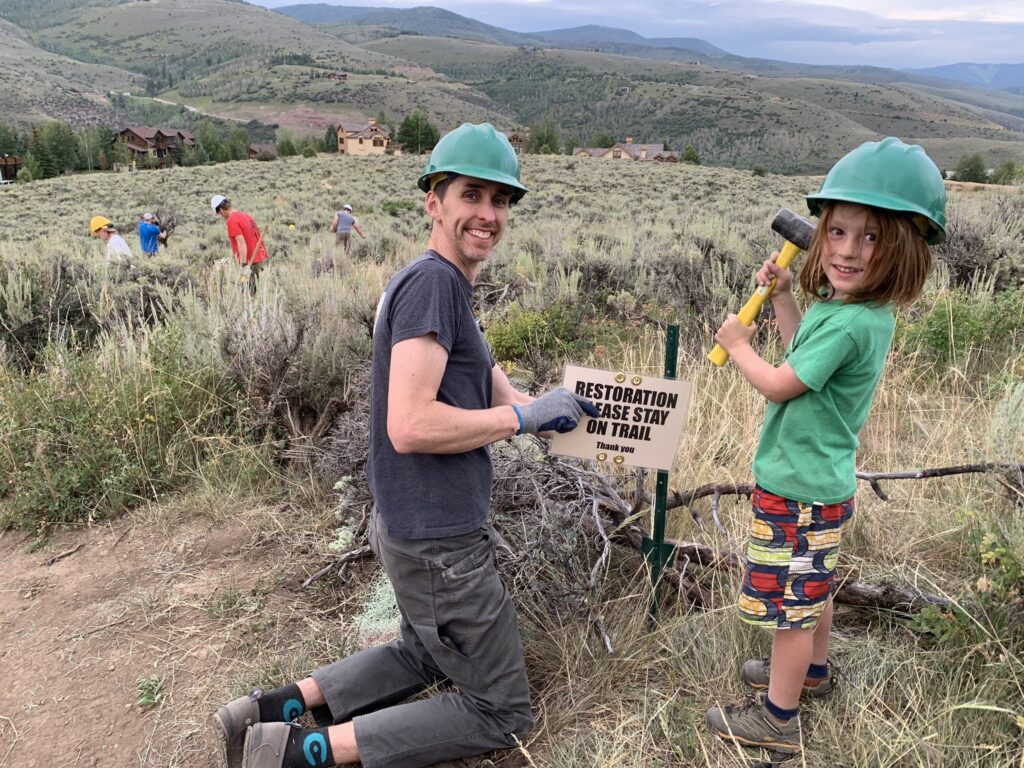Read the full article in the Vail Daily here.
Outdoor Recreation (from our view) refers to fun, leisure activities that take place in a natural setting (such as on trails) and benefit the body, mind and/or spirit. Conservation is the protection of natural resources and the environment for current and future generations.
Recreation and conservation are two highly important and ever-present parts of what makes our community a great place to live. The fact and reality are that our community values recreation and takes advantage of the abundant recreation opportunities our surrounding natural resources offer us. Often, recreation and conservation are perceived as at odds with one another, but that’s only when viewed through a narrow lens. They are intricately linked and you really can’t have one without the other.
Recreation and conservation can work together to create a more sustainable future for our community and the natural environment we are fortunate to be surrounded by. The Colorado Outdoor Partnership states as one of its principles, “Both conservation and recreation are needed to sustain Colorado’s quality of life. Both are beneficial to local economic well-being, for personal health, and for sustaining Colorado’s natural resources.” We couldn’t agree more. Here are some examples of how they can support each other:
‘People don’t need trails, the land does‘
Let’s use the West Avon Preserve as an example to explain this concept. This land contains the rare plant Harrington’s penstemon and is important winter habitat for mule deer and elk. Imagine (or remember) how this 478-acre parcel of land in Avon was used prior to a land swap, conservation easement, and management plan executed in 2013. It was highly unmanaged, did not contain a seasonal wildlife closure, and contained a significant amount of social/illegal user-created trails. People accessed this land whenever they wanted, undoubtedly trampled Harrington’s penstemon, and wandered, chartering their own course across the entire area. Today, the West Avon Preserve contains almost 12 miles of sustainable multi-use non-motorized trails to provide recreation opportunities, in the right place and at the right time. Before being built, each trail underwent significant environmental studies to ensure that Harrington’s penstemon was not trampled. Additionally, a majority of the land and trails are now under a well-respected and understood seasonal wildlife closure. If we don’t give people the right experiences and places to connect with nature, they are going to create it on their own, and more than likely in the wrong places and at the wrong times. Between Avon and Edwards, over 8,000 people live within a mile of this recreation hub. It is a designated trail system that’s well planned, designed, constructed and maintained, minimizing the human impact on the landscape that’s been conserved.
Experiences and time in nature create a community of stewards
When people enjoy spending time in nature, they are more likely to appreciate the benefits and value of the natural world. Trail-based recreation provides our community with access to connect with nature. It’s no surprise that we have many nonprofits in our community such as the Eagle Valley Land Trust, Walking Mountains Science Center, Eagle River Watershed Council, and others that offer opportunities to connect with and protect our natural environment. Our volunteer-driven Trail Stewardship programs include Adopt A Trail, Youth Trail Stewards, and Wildlife Trail Ambassadors, and annually engage over 1,200 volunteer trail stewards. These volunteers participate in our programs because they want to take care of the trails, public lands, and nature that they enjoy and love. They want to ensure sustainable trail-based recreation and conservation initiatives exist for us today and for future generations.
Education and awareness lead to conservation action
The more education and awareness about conservation initiatives and responsible recreation practices we can provide to our community, the more action will be taken. For example, when we proposed to build the Everkrisp trail in 2017, we learned why seasonal wildlife closures exist and that our community was not informed or educated on their importance nor where and when they exist. As a result, we launched our volunteer Wildlife Trail Ambassador program, installed new signage and gates at trailheads, and significantly increased education and awareness around seasonal wildlife closures. In one month in 2017, a game camera on a closed section of the North trail showed 212 human violations of the closure. In 2022, that same section had 23 violations over a two-month period. The result was a new trail opportunity being provided for our community and an educational program being created to help educate our community to support wildlife.
Recreation is a powerful tool that can be used to support and promote conservation. By engaging our community who are enjoying our trails, we are able to create more stewards who are invested in conserving our natural environment. By coming together, we can provide recreation opportunities while also conserving and protecting the environment for future generations.

